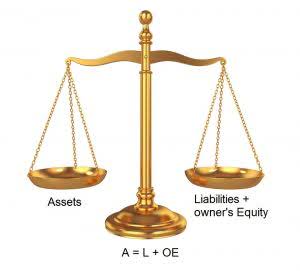Closing Entry: What It Is and How to Record One

The trial balance shows the ending balancesof all asset, liability and equity accounts remaining. The mainchange from an adjusted trial balance is revenues, expenses, anddividends are all zero and their balances have been rolled intoretained earnings. We do not need to show accounts with zerobalances on the trial balances.
Step 3: Close Income Summary to the appropriate capital account
The purpose of the closing entry is to reset temporary account balances to zero on the general ledger, the record-keeping system for a company’s financial data. At the end of a financial period, businesses will go through the process of detailing their revenue and expenses. If your business is a sole proprietorship or a partnership, your next step will be to close your income summary account. You can do this by debiting the income summary account and crediting your capital account in the amount of $250. This reflects your net income for the month, and increases your capital account by $250. When closing the revenue account, you will take the revenue listed in the trial balance and debit it, to reduce it to zero.
What are the 3 Golden Rules of Accounting: Types & Example
- At the end of the period, the balances in these accounts are transferred to the retained earnings account or another permanent account, which represents the cumulative earnings of the company since its inception.
- As a corresponding entry, you will credit the income summary account, which we mentioned earlier.
- Take note that closing entries are prepared only for temporary accounts.
- To begin, you want to run an adjusted trial balance, which is used to prepare your closing entries, moving both the revenue and the expense account balances, as well as drawing account and/or dividend account balances.
- Whenyou compare the retained earnings ledger (T-account) to thestatement of retained earnings, the figures must match.
When making closing entries, the revenue, expense, and dividend account balances are moved to the retained earnings permanent account. If you own a sole proprietorship, you have to close temporary accounts to the owner’s equity instead of retained earnings. All temporary accounts must be reset to zero at the end of the accounting period. To do this, their balances are emptied into the income summary account.
How Highradius Can Help You Streamline Your Accounting Management
Dividends are payments by corporations to shareholders using the extra profits they have generated during the fiscal year. Each year, the dividends could be different as the number of profits the business generates could differ depending on the industry’s performance. Accounting Expense is a contra account that displays the balance of the assets and liabilities spent to generate Revenue in the business. The abbreviation REID makes it simple to recall which accounts need to be closed and how they are completed. Mr. Arora is an experienced private equity investment professional, with experience working across multiple markets. Rohan has a focus in particular on consumer and business services transactions and operational growth.
HighRadius has a comprehensive Record to Report suite that revolutionizes your accounting processes, making them more efficient and accurate. At the core of this suite is the Financial Close Management solution, which simplifies and accelerates financial close activities, ensuring compliance and reducing errors. Automation transforms the process of closing entries in accounting, making it more efficient and accurate. By leveraging automated systems, businesses can ensure that all tasks related to closing entries are handled seamlessly, reducing manual effort and minimizing errors.

Temporary vs Permanent Accounts

In a computerized accounting system, the closing entries are likely done electronically by simply selecting “Closing Entries” or by specifying the beginning and ending dates of the financial statements. As a result, the temporary accounts will begin the following accounting year with zero balances. The fourth entry requires Dividends to close to the RetainedEarnings account. In this chapter, we complete the final steps (steps 8 and 9) ofthe accounting cycle, the closing process. This is an optional stepin the accounting cycle that you will learn about in futurecourses.

Temporary account balances can be shifted directly to the retained earnings account or an intermediate account known as the income summary account. Permanent accounts track activities that extend beyond the current accounting period. They’re housed on the balance sheet, a section of financial statements that gives investors an indication of a company’s value including its assets and liabilities. Once this is done, it is then credited to the business’s retained earnings.

How much will you need each month during retirement?

Where Can You Find The Closing Entry Information?
Acesse também em outras plataformas:

Comentários